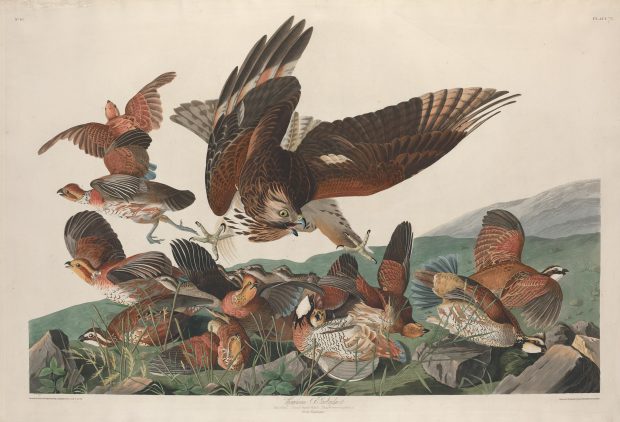
There is a relationship between landscape and language. Being able to read a landscape and to name the things we see is a critical skill for nature lovers and environmental humanists alike. In observing and experiencing a landscape, we draw on both our senses and our accumulated knowledge to identify landscape features and characteristics. In doing so, nature becomes a collection of signs from which we can derive meaning and information. Trees, moss, grass, stones, hills, streams, and lakes are but some examples, but also evidence of human activity such as trails, structures, signs, tracks, and trash all give us clues to the various layers of meaning in landscapes.
A website developed by William Cronon and his graduate students is a wonderful resource for learning what it means to read a landscape. As Cronon’s guide states, “Landscape consists not only of the physical and material elements we encounter in a place, but also the representations of these things via texts, including arts, maps, and pictures.” Nature writing is very often centered on the bodily experience of nature, on accessing nature through the five senses (sight, touch, smell, hearing, and taste). At the same time, it is evident that we are also drawing on a wealth of cultural knowledge, in language, tradition, history, when sensing through the body.
Every language has a highly specialized vocabulary to characterize such landscape features, tied up with the long history of the cultural usage of landscapes. In a recent article discussing his new book Landmarks, the British nature writer Robert Macfarlane explored these relations between landscape and language and his attempts to catalogue local words for nature phenomena. Some examples:
- Ammil, “a Devon term for the thin film of ice that lacquers all leaves, twigs and grass blades when a freeze follows a partial thaw, and that in sunlight can cause a whole landscape to glitter.”
- Zwer, an Exeter ”onomatopoeic term for “the sound made by a covey of partridges taking flight.”
- Smeuse, an English dialect noun for “the gap in the base of a hedge made by the regular passage of a small animal”
Even though we may never have heard these words before, or even thought about the need for such precise words, it is easy to relate to them, often recognizing the phenomena they refer to. Macfarlane recognized the impossibility of a complete dictionary of such words, preferring to think of them as wunderkammers or chambers of curiosities rather than archives.
The problem with Macfarlane’s position is that there is no room for the digital in his landscape lexicon. He reinforces an imagined oppositional relationship between nature and the digital, with “the outdoor and the natural being displaced by the indoor and the virtual,” as he writes. He and many others responded with outrage when the Oxford Junior Dictionary decided to replace 50 nature words in the 10,000 word children’s dictionary with words they considered more relevant for today’s children, such as “broadband,” “cut and paste,” and “analogue.” This is the age-old authenticity debate all over again, where new technologies can only make the experience of nature into something less than it was.
If we are to take the digital environmental humanities seriously as a field of study, we should look for the ways that the digital is part of nature; we should look towards what new and valuable words and ideas can be created. Macfarlane concluded his article by deciding “to leave blank the final glossary of the book – there to hold the place-words that have yet to be coined.” Will some of these words refer to nature phenomena we can only experience when augmented by digital media? Can the digital add to the dictionary of nature words rather than just forcing such words out? Do we need new words for phenomena such as:
- The anticipation of physically visiting a place we have only seen on Google Maps?
- Distinguishing a landscape that has been augmented with openly accessible digital data about flora, fauna, and geology from one that has not?
- A landscape where the GPS signal is unreliable due to geological features?
While this is in part a speculative question, it is also an extension of already existing ways of sensing and naming nature. Various technologies have extended these senses for a long times – take for instance the compass telling the direction, the map revealing surrounding terrain, the binoculars bringing the faraway closer. Cronon and his students recognized that digital technologies play a role in our reading of a landscape, as their landscape reading guide encourages us to study a place in Google Earth, zooming in and out to “toggle the scale at which you frame your attention.” Some landscape features are only visible – and may only be appreciated – from what we can call a more-than-human viewpoint, extended by digital senses.
Can you think of more digital words that should be added to the dictionary nature words? Or digital nature phenomena that needs its own word? Let us know on Twitter or in a comment below!
Image: Zwer – the sound of partridges taking flight. Robert Havell after John James Audubon. Virginian Partridge, 1830. The Birds of America: Plate LXXVI. Public domain. Courtesy of the National Gallery of Art.

This text was originally published on the Ant Spider Bee website and will also be included in the Ant Spider Bee book.